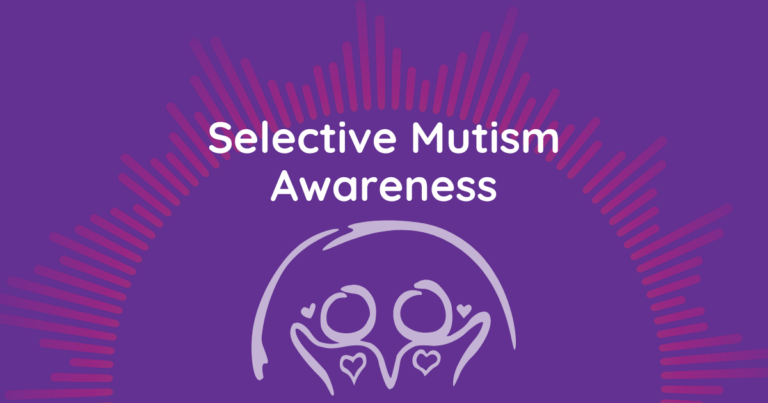Introduction
October is Selective/ Situational Mutism Awareness Month! Selective Mutism (SM) is a complex and often misunderstood anxiety disorder that affects individuals, primarily children, causing them to remain consistently silent in specific social situations. Despite its prevalence, SM remains a relatively obscure topic. In this blog post, we aim to shed light on the world of Selective Mutism, offering insights, strategies, and support for those affected by this condition and those who care for them.
Understanding Selective Mutism
Selective Mutism is not simply shyness or a phase that children will naturally grow out of. It is a psychological disorder characterized by an individual’s consistent inability to speak in particular social settings, even though they may be expressive and communicative in others.
Children with SM may experience severe anxiety in certain situations, rendering them unable to speak. Common triggering environments include school, social gatherings, or public places. Understanding that this silence is a manifestation of anxiety is crucial in offering the right kind of support.
Recognising Selective Mutism
Recognising the signs of Selective Mutism is essential for early intervention and support. Things to look out for:
Consistent Silence: A child with SM will remain persistently silent in specific situations, even when they can speak fluently in other contexts. This is often become apparent when the child starts school.
Social Anxiety: The individual may show signs of social anxiety. Physical symptoms like blushing, sweating, trembling, or avoiding eye contact may also be apparent. These signs may not always be obvious or noticeable.
Difficulty with Authority Figures: They may find it particularly challenging to speak with teachers, coaches, or other adults in positions of authority.
Support and Intervention
Addressing Selective Mutism requires a multi-faceted approach involving parents, educators, and speech therapy. It is important that you seek professional help by consulting with a speech therapist who is experienced in treating Selective Mutism. This professional will guide you on how to create a Supportive Environment that avoids putting pressuring the individual to speak and encourage non-verbal communication, like writing or using gestures. Intervention involves education for all and often close collaboration with School staff.
How can I help today?
- Be patient and empathetic. It is important to understand that overcoming SM is a gradual process, and it’s essential to provide a safe space for the individual to express themselves in their own time.
- Never try to force, pressure of persuade individuals to speak.
- Show kindness and accept other forms of communication
Conclusion
Selective Mutism is a challenging and often misunderstood anxiety disorder, but with the right support and intervention, individuals affected by it can learn to communicate effectively in a variety of social settings. Raising awareness about SM is crucial, as it can help dispel myths and stigmas surrounding the condition. With early recognition and appropriate treatment, those who suffer in silence can find their voice and embrace the world around them with confidence.
In our webinar, we are doing to delve deeper into this topic, looking at what is selective mutism in more detail and the history of the name. We will explore some myths and facts around the disorder, the diagnostic criteria, common characteristics, causes and how we can help. We will discuss early intervention, talking to the child, educating others and dealing with peers. We hope that this blog has given you an overview into this important topic and we welcome you to join us and further your learning through our up and coming webinar. Book the webinar here.


